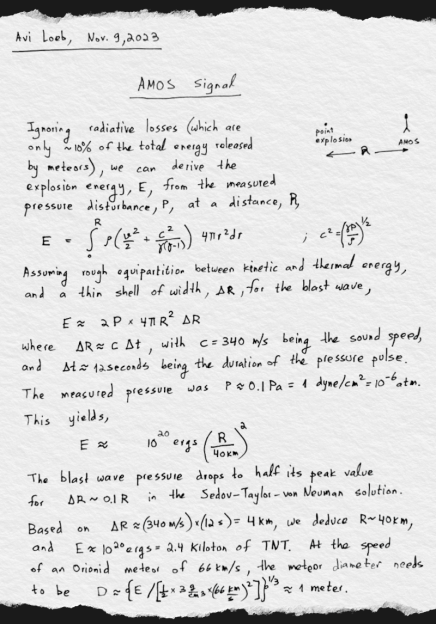Last month, thousands of people in New Hampshire took to social media to report an explosion in the sky that was strong enough to rattle windows. Naturally aliens were blamed by some, while cooler heads theorized it may have been a sonic boom from a military aircraft. But without any evidence, who could say?
Luckily for concerned residents, this was precisely the sort of event Harvard’s Galileo Project was designed to investigate. Officially described as a way to search for “technological signatures of Extraterrestrial Technological Civilizations (ETCs)”, the project keeps a constant watch on the sky with a collection of cameras and microphones. With their gear, the team was able to back up the anecdotal reports with with hard data.
As explained in a recent article on The Debrief written by project head [Avi Loeb], none of Galileo’s optical equipment captured anything interesting at the time. But it’s acoustic monitoring, omni-directional system (AMOS), which records from the infrasonic all the way to ultrasonic (specifically, 0.05 hertz to 190 kilohertz), got an earful during the 12-second event.
 [Avi] was able to take the data collected by AMOS and run it through the Taylor–von Neumann–Sedov solution, which was originally developed during World War II to estimate how much energy was released during the detonation of a nuclear bomb from the spherical blast-wave it produced.
[Avi] was able to take the data collected by AMOS and run it through the Taylor–von Neumann–Sedov solution, which was originally developed during World War II to estimate how much energy was released during the detonation of a nuclear bomb from the spherical blast-wave it produced.
By plugging the amplitude and duration of the pressure wave into the equation, he calculated an energy release of approximately 2.4 kilotons of TNT at a distance of about 40 kilometers (25 miles).
Since the detonation of a tactical nuclear weapon within a 40 km radius of Mount Washington would likely have been noticed by somebody, the likely culprit would therefore be some object entering the Earth’s atmosphere.
As it turns out, the Orionid meteor shower was just about at its peak in the skies over Massachusetts at that point. Given the average velocity of these particular meteors (66 km/s), [Avi] figures the source of the sound was a space rock of about a meter in diameter meeting its fiery end.
We know, aliens would have been more fun. But this is precisely the sort of grounded research that needs to happen for Unidentified Anomalous/Aerial Phenomena (UAP) to be taken seriously. We hadn’t heard of the Galileo Project before this, but will certainly be keeping an eye on its findings going forward.
Thanks to [PWalsh] for the tip.

